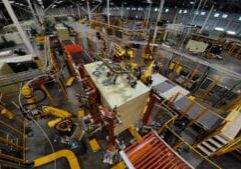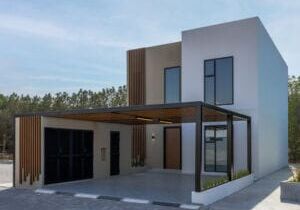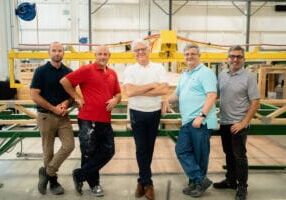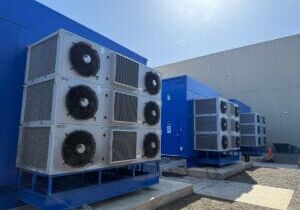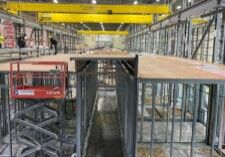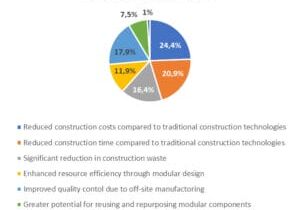Affordable Housing- A Global Issue
MBI was recently asked to participate in an international conference organized by Hong Kong University and hosted by the Construction Industry Council of Hong Kong. The conference centered around Hong Kong’s planned use of “Modular Integrated Construction” (MIC) to address their housing issues.
Hong Kong has one of the highest development  costs in the world, coupled with low land availability, low skilled labor availability, and a large population. Hong Kong is one of the most densely populated countries in the world (ranking fourth behind Singapore) with over 17,348 people per square mile. For comparison, the US ranks 188th with 86 people per square mile and Canada ranks 235th with 10 people per square mile. As a result, Hong Kong ranks as the second most expensive area globally for construction development, behind only New York City.
costs in the world, coupled with low land availability, low skilled labor availability, and a large population. Hong Kong is one of the most densely populated countries in the world (ranking fourth behind Singapore) with over 17,348 people per square mile. For comparison, the US ranks 188th with 86 people per square mile and Canada ranks 235th with 10 people per square mile. As a result, Hong Kong ranks as the second most expensive area globally for construction development, behind only New York City.
Hong Kong has virtually no modular industry today, yet government officials are considering steel modular construction for high-rise buildings to house residents. This is not unprecedented as several presentations during the conference documented progress in other parts of the world. For example, Singapore had no modular industry five years ago, and today four modular public housing projects, each topping 30 stories, have been completed. Five years ago, Australia’s modular industry largely consisted of relocatable buildings and workforce housing. Hickory Group has completed a 43-story building, with a 44-story building about to be complete. While more of a panelized system, this progress towards alternative construction techniques is stunning.
In the U.K. it is estimated that new housing construction needs to double to reach the government’s goal of 300,000 new units annually by the middle of the next decade. The U.K. modular market is much more mature than most other regions, with tall modular structures dating back more than a decade. MBI organized a tour in 2008 to visit U.K. factories as well as a 17-story and 24-story modular student housing projects. Today, 20+ story modular structures are occurring with much more regularity in the U.K.
While there are obviously many differences in overseas markets, there were some striking similarities.
Key Differences
- Hong Kong, Singapore, and the U.K. are smaller geographic areas with limited land availability. As a result, these regions have been forced to adopt high rise construction years ago because they have nowhere to go but “up.”
- Hong Kong, Singapore, U.K., and Australian markets are largely being driven by government agencies to address housing needs.
- There is no modular market whatsoever in Hong Kong now, so there are no preconceived notions about its limitations
Similarities
- Extremely high housing costs
- Low or limited construction labor availability
- Lack of understanding of modular construction from code officials and policy makers.
This article originally appeared in the Modular Advantage Magazine - Third Quarter 2018 released in September 2018.
More from Modular Advantage
Resia: Breaking All the Rules
Resia Manufacturing, a division of U.S.-based Resia, is now offering prefabricated bathroom and kitchen components to industry partners. Its hybrid fabrication facility produces more precise bathroom and kitchen components (modules) faster and at lower cost than traditional construction. Here’s how Resia Manufacturing does it.
How LINQ Modular Innovates to Bring Modular To The Market in the UAE and Beyond
LINQ Modular, with an office and three manufacturing facilities in Dubai, is a modular firm based in United Arab Emirates. The company is on a mission: to break open the housing and construction markets in the Gulf Cooperation Council (GCC) area with modular.
ModMax: Redefining Modular Construction with Confidence and Precision
ModMax was born out of frustration—frustration with five persistent pain points in modular construction: Permitting bottlenecks. Production delays. Rigid designs. Disconnect between “the office” and the field. Lack of transparency and communication.
LifeArk: Disaster-Resilient Housing from Recycled Plastic and 100-year-old Technology
Wee compares LifeArk’s housing units to Yeti coolers, as they are built similarly. Each component takes 15 to 20 minutes to manufacture, has an R-value of 40, and includes molded slots and chases for wiring, plumbing, fire sprinklers, and other utilities.
Building the Future of Modular Edge Infrastructure
The edge data center market is expanding rapidly, driven by the surge in AI workloads, IoT adoption, and the need for localized compute power. In these environments, sustainability, scalability, and reliability are non-negotiable. Cooling is among the most complex challenges for operators—and one of the most decisive factors in long-term success.
Accelerating Light-Gauge Steel Construction: A Semi-Automated Digital Workflow for Off-Site Projects
For construction professionals, the message is clear. By adopting semi-automation and digitalization, companies can deliver projects faster, more accurately, and more profitably, while also building stronger collaboration across teams. The approach is not about replacing people with machines, but about empowering people with better tools and processes.
Why Modular Data Centers Are Gaining Momentum
Artificial intelligence, high-performance computing, and edge applications push the limits of traditional “stick-built” data centers. They take years build, often struggle with high density workloads, and aren’t optimized for deployments near end users. Modular data center platforms are purpose-built to address these challenges, offering flexibility and scalability to adapt to evolving technologies, while opening new opportunities for the modular construction industry.
Supply Chain Innovation in Action: 5 Habits Every Modular Leader Should Practice
By applying these principles to supply chain practices — collaborative planning, strategic procurement, scenario modeling, digital tools, and transparent forecasting — construction leaders can build value chains that are not just efficient and agile, but truly innovative.
Exploring the Role of Modular Integrated Construction (MiC) in Advancing Circular City Principles – A Survey of Stakeholder Perspectives
The survey findings highlight the significant potential of Modular integrated Construction (MiC) in advancing the development of circular cities. By reducing costs, accelerating construction timelines, and minimizing waste generation, MiC offers a promising approach to sustainable urban development.
The Use of MS POLYMER™-Based Sealants and Adhesives in Modular Building
These products combine flexibility and elastic recovery with excellent adhesion to different substrates and have already shown their usefulness in traditional construction. Now it’s time for them to be put to use in the modular construction industry.

